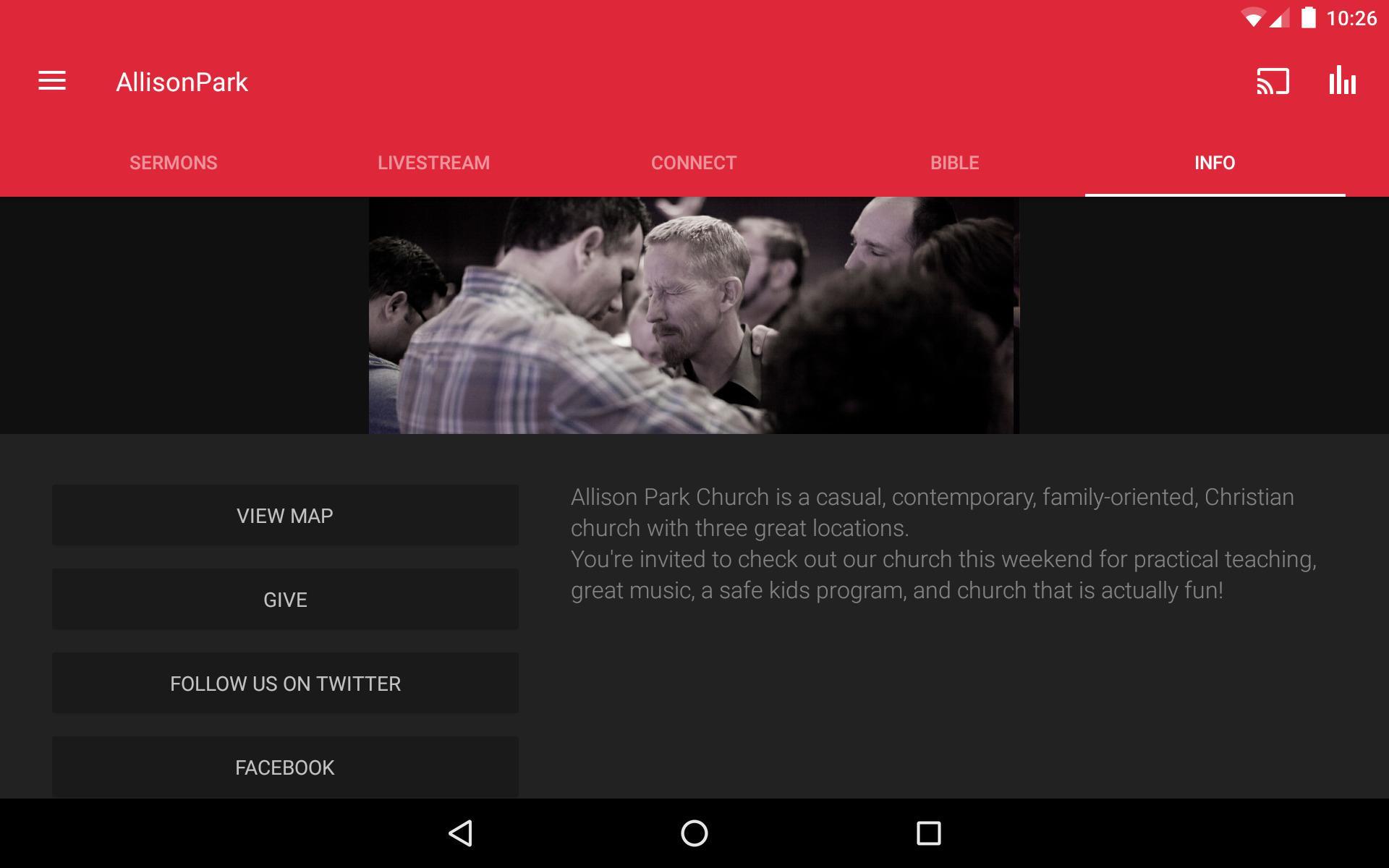APC Life is the official App of Allison Park Church
Welcome to the official Allison Park Church app.
With the APC life app, you can stream services live each weekend, catch them again on-demand, access resources, connect with a life group, give online, and more!
For more information about Allison Park Church, please visit: www.allisonparkchurch.com
The Allison Park Church App was created with the Subsplash App Platform.
What's New in the Latest Version 6.10.11
Last updated on Jun 29, 2024
Misc media improvements
APC Life is a cellular automation simulation game that models the growth and interaction of artificial organisms in a two-dimensional grid world. The game was created by Andrew Ilachinski in 1994 and has since become a popular platform for exploring the principles of artificial life and complex systems.
Game Mechanics
In APC Life, the world is represented by a grid of cells, each of which can be occupied by an organism or remain empty. Organisms are represented by sets of four numbers (APC values) that determine their behavior:
* A (Adaptability): The organism's ability to adapt to changes in its environment.
* P (Photosynthesis): The organism's ability to produce energy from sunlight.
* C (Carnivore): The organism's ability to consume other organisms.
* L (Lifespan): The organism's maximum lifespan.
Life Cycle
Organisms in APC Life go through a life cycle that consists of the following stages:
* Birth: New organisms are born into empty cells adjacent to existing organisms. The APC values of the new organism are determined by the APC values of its parents and random mutations.
* Growth: Organisms grow by increasing their size, which is represented by the number of cells they occupy.
* Reproduction: Organisms reproduce by dividing into two smaller organisms. The APC values of the offspring are inherited from the parent organism with some random variation.
* Death: Organisms die when they reach the end of their lifespan or are consumed by another organism.
Interactions
Organisms in APC Life interact with each other in a variety of ways:
* Photosynthesis: Organisms with high photosynthesis values can produce energy from sunlight, which they use to grow and reproduce.
* Carnivory: Organisms with high carnivore values can consume other organisms, gaining energy and increasing their size.
* Competition: Organisms compete for resources, such as sunlight and food. Organisms with higher adaptability values are better able to survive in competitive environments.
Evolution
Over time, the population of organisms in APC Life evolves through natural selection. Organisms with advantageous APC values are more likely to survive and reproduce, passing on their genes to the next generation. This process leads to the emergence of new species and the adaptation of organisms to their environment.
Complexity and Emergence
APC Life is a complex system that exhibits a wide range of emergent behaviors. These behaviors include:
* Self-organization: Organisms can form complex patterns and structures, such as clusters, spirals, and mazes.
* Symbiosis: Organisms can form cooperative relationships, such as mutualism and commensalism.
* Ecosystems: Populations of organisms can form complex ecosystems with multiple trophic levels and food chains.
Applications
APC Life has been used as a tool for studying a variety of topics, including:
* Artificial life: The principles of artificial life and the emergence of complex behavior from simple rules.
* Evolutionary biology: The mechanisms of natural selection and the evolution of adaptive traits.
* Ecology: The dynamics of ecosystems and the interactions between species.
* Computer science: The design of complex systems and the simulation of biological processes.
APC Life is the official App of Allison Park Church
Welcome to the official Allison Park Church app.
With the APC life app, you can stream services live each weekend, catch them again on-demand, access resources, connect with a life group, give online, and more!
For more information about Allison Park Church, please visit: www.allisonparkchurch.com
The Allison Park Church App was created with the Subsplash App Platform.
What's New in the Latest Version 6.10.11
Last updated on Jun 29, 2024
Misc media improvements
APC Life is a cellular automation simulation game that models the growth and interaction of artificial organisms in a two-dimensional grid world. The game was created by Andrew Ilachinski in 1994 and has since become a popular platform for exploring the principles of artificial life and complex systems.
Game Mechanics
In APC Life, the world is represented by a grid of cells, each of which can be occupied by an organism or remain empty. Organisms are represented by sets of four numbers (APC values) that determine their behavior:
* A (Adaptability): The organism's ability to adapt to changes in its environment.
* P (Photosynthesis): The organism's ability to produce energy from sunlight.
* C (Carnivore): The organism's ability to consume other organisms.
* L (Lifespan): The organism's maximum lifespan.
Life Cycle
Organisms in APC Life go through a life cycle that consists of the following stages:
* Birth: New organisms are born into empty cells adjacent to existing organisms. The APC values of the new organism are determined by the APC values of its parents and random mutations.
* Growth: Organisms grow by increasing their size, which is represented by the number of cells they occupy.
* Reproduction: Organisms reproduce by dividing into two smaller organisms. The APC values of the offspring are inherited from the parent organism with some random variation.
* Death: Organisms die when they reach the end of their lifespan or are consumed by another organism.
Interactions
Organisms in APC Life interact with each other in a variety of ways:
* Photosynthesis: Organisms with high photosynthesis values can produce energy from sunlight, which they use to grow and reproduce.
* Carnivory: Organisms with high carnivore values can consume other organisms, gaining energy and increasing their size.
* Competition: Organisms compete for resources, such as sunlight and food. Organisms with higher adaptability values are better able to survive in competitive environments.
Evolution
Over time, the population of organisms in APC Life evolves through natural selection. Organisms with advantageous APC values are more likely to survive and reproduce, passing on their genes to the next generation. This process leads to the emergence of new species and the adaptation of organisms to their environment.
Complexity and Emergence
APC Life is a complex system that exhibits a wide range of emergent behaviors. These behaviors include:
* Self-organization: Organisms can form complex patterns and structures, such as clusters, spirals, and mazes.
* Symbiosis: Organisms can form cooperative relationships, such as mutualism and commensalism.
* Ecosystems: Populations of organisms can form complex ecosystems with multiple trophic levels and food chains.
Applications
APC Life has been used as a tool for studying a variety of topics, including:
* Artificial life: The principles of artificial life and the emergence of complex behavior from simple rules.
* Evolutionary biology: The mechanisms of natural selection and the evolution of adaptive traits.
* Ecology: The dynamics of ecosystems and the interactions between species.
* Computer science: The design of complex systems and the simulation of biological processes.
















